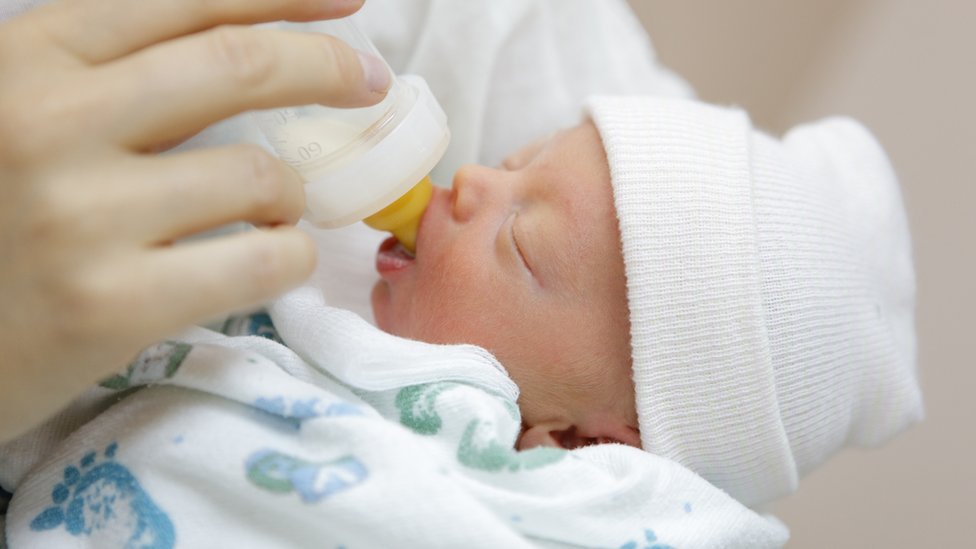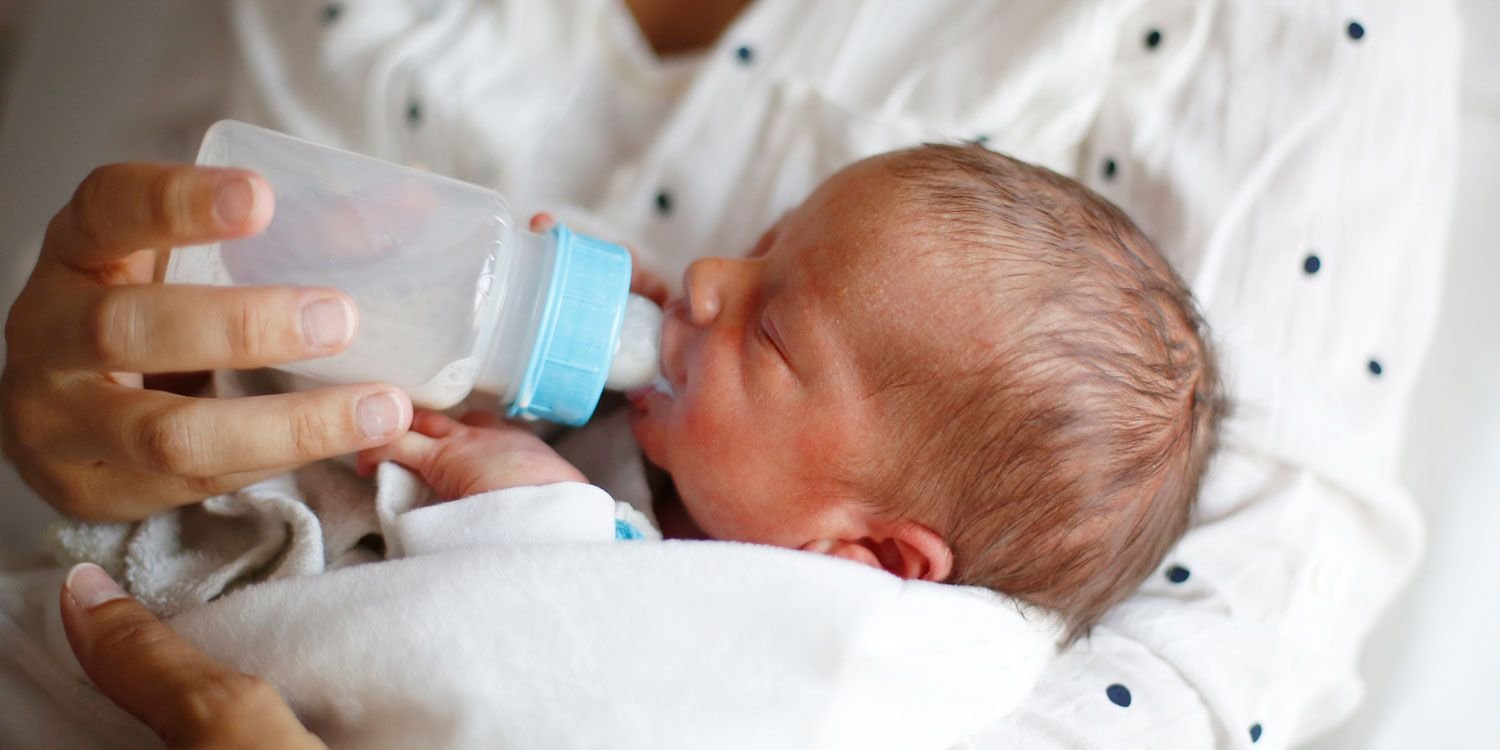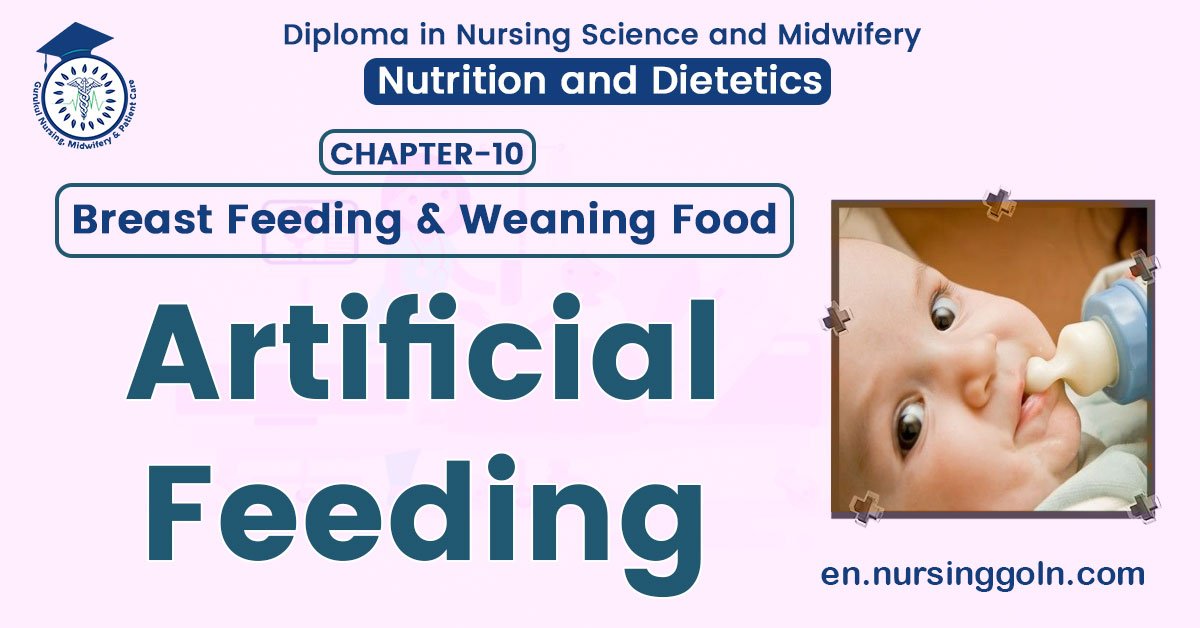Concept about Artificial Feeding – This book covers the entire syllabus of “Nutrition and Dietetics” prescribed by BNMC-for all Diploma in Nursing Science and Midwifery students. We tried to accommodate latest information and topics. This book is examination friendly setup according to the teachers’ lectures and examination’s questions. At the end of the book previous university questions are given. We hope in touch with the book students’ knowledge will be upgraded and flourished. The unique way of presentation may make your reading of the book a pleasurable experience.
Concept about Artificial Feeding
The term “artificial feeding” is implied to the condition when a baby is completely derived of mother’s milk due to some maternal or other causes and the entire dietary demand of the baby is met from sources of food except mother’s milk.
Principles of Artificial Feeding:
The nutritional needs of the baby should be kept in view during planning an artificial feed.
These are as follows:
1. An average energy requirement of an infant is 100 kcal/kg/day, i.e. about 150 ml of milk per kg of body weight per day.
2. The protein requirement is about 2 g/kg daily during the first 6 months, it declines to about 1.5 g/kg daily by the end of one year. According to this 13-14 gm protein daily is given during first year of life” In term of calories 8-10% of calories are given as protein.
3. The carbohydrate requirement is about 10g/kg daily.
4. After the age of 4 months, undiluted boiled and cooled milk should be given.
5. Infants need feeding at frequent intervals about 68 times daily; older babies 5 times daily.
6. Calorie requirement is increased during illness, e.g., fever and it should be met.

Indications of Artificial Feeding:
1. Cessation of breast milk secretion.
2. Diseases of breast.
3. Prolonged illness of the mother or death of mother
4. When the infant is intolerant to lactose.
5. When the mother is getting anticancer drug.
6. Working mother.
Breast-Feeding Differ From Bottle Feeding:
| Breast Feeding | Bottle Feeding |
|
|
|
|
|
|
|
|
|
|
|
|
|
|
|
|

Difference Between Breast (Mother’s) Milk and Cow’s Milk:
| Composition | Breast Milk | Cow’s Milk |
| Protein | 11g/litre | 33g/liter |
| Carbohydrate | 70 g/liter | 50 g/liter |
| Fat | 35 g/liter | 35 g/liter |
| Non protein | 0.32 g/liter | 0.32 g/liter |
| Minerals | 2 g/liter | 8 g/liter |
| Ca | 0.33 g/liter | 1 g/liter |
| P | 0.15 g/liter | 1 g/liter |
| Fe | 0.4-1.5 g/liter | 0.3-0.5 g/liter |
| Vitamin C | 60 g/liter | 20 g/liter |
| Vitamin D | 50 IU | 25 IU |
| Water | 88 g/liter | 7 g/liter |
| Energy | 640-720 Kcal | 650 Kcal |
Colostrum is Important for the Just Born Baby:
1. Colostrum is important for the just born baby because it contains more antibodies and cells with higher amount of proteins and fat soluble vitamin (A, D, E, K).
2. It is sufficient and protective for the baby and should not be discarded” It is secreted during first three days after delivery. It is thick, yellow and small in quantities.
Mothers’ Milk is Superior to Cows’ Milk:
1. Proteins in breast milk are easily digested as they form a very fine flocculent curd in the stomach. The curd of the cow’s milk is thick and hard to digest for the young stomach due to large proportion of caseinogen.
2. Breast milk contains twice as much iron as in the cow’s milk. This iron is essential for the new born and meets his needs upto 3 months. Anaemia is commonly seen in babies fed on cow’s milk even before 3 months.
3. Calcium of breast milk is utilized better as it present in a more assimilable form.
4. Vitamin-A is present in larger quantities in colostrums. Mother’s milk contains more vitamin-A than that in cow’s milk.
5. Vitamin-C content of breast milk is related to vitamin-C content of mother’s diet, but in general it is higher. Cow’s milk loses its vitamin-C content due to boiling, dilution and exposure to air.
Method of Sterilization of Bottle:
1. Bottle should be rinsed with warm water to remove the traces of fat and with cold water to remove milk particles.
2. Bottle should be cleaned with a brush.
3. No soap or detergents to be used.
4. The-cap, nipple and bottle should be separated and kept in Bottle boiling water for 10 minutes.
5. Bottle should be sterilized every time before use.

Read more:
